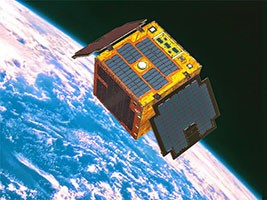
The Philippines is set to launch its first satellites by the years 2016 and 2017. These satellites will be the first Philippine micro satellites and also the first to be designed and built by Filipinos.
The Philippine satellite launch into space will be led by the Department of Science and Technology (DOST). The micro-satellites will be the thesis of Filipino students studying for their Masters program at Tohoku and Hokkaido universities in Japan. The universities will be directly supporting the micro-satellite creation.
DOST says the microsatellites will primarily boost the country’s weather detection technology, disaster management and forest protection, among many other uses.
Diwata, officially the PHL-Microsat-1, is one of the two microsatellites that are part of DOST’s Philippine Scientific Earth Observation Micro-Satellite (PHL-Microsat) Program.
Diwata is set to be launched by 2016 while its successor, PHL-Microsat-2 will be launched in 2017.
DOST secretary Marciano Montejo believes that being in control of our own tools will bring about many advantages saying, “Having our own receiving station and satellite will be a departure from our present set-up, where we rely on third-party service providers and commercial vendors to provide satellite space imagery along with interpretation.”
According to the Montejo, a receiving station for satellite data is already in the works. “We are still developing the tools. But it’s a program that has already been approved by our president,” Montejo shares.
Earlier reports indicate the Diwata will be controlled from a ground station based in Subic Freeport named Philippine Earth Data Resources Observation (PEDRO) Center.
A research lab at UP Diliman will have direct access to information from the receiving station to help develop improvements on the micro-satellite program.
The DOST secretary also disclosed that the project will amount to over 800 million pesos.
The program is also supported by the Japan Space Exploration Agency (JAXA). Ten Filipino students will be trained to create and operate the micro-satellites.










